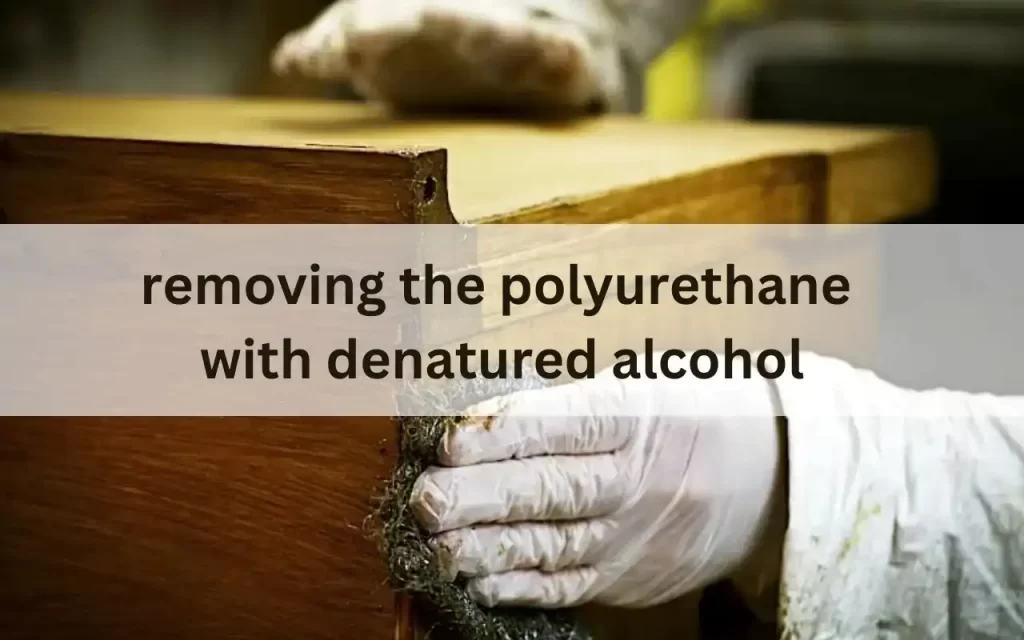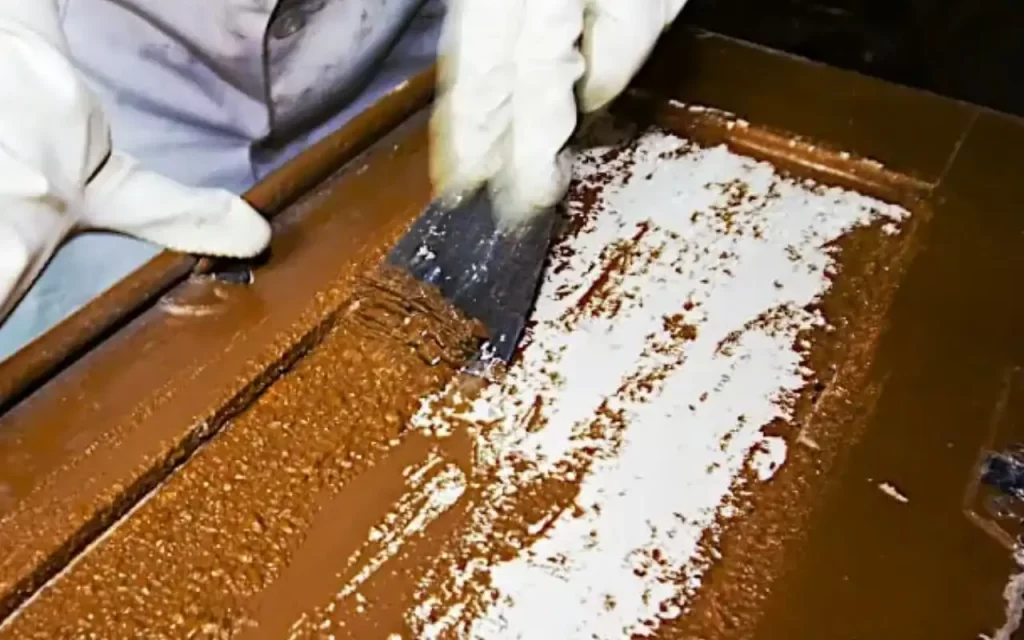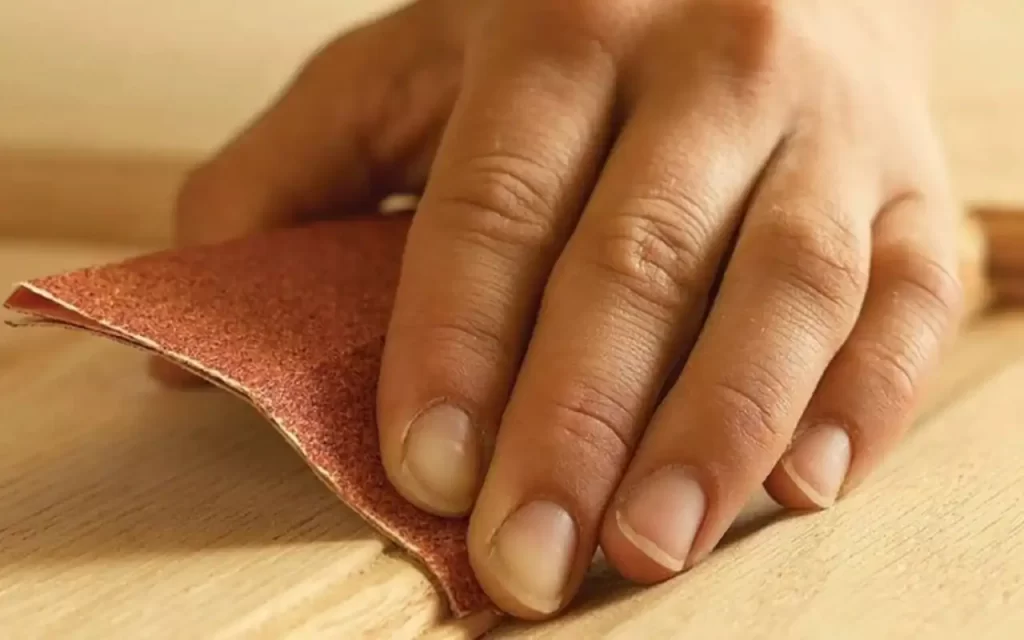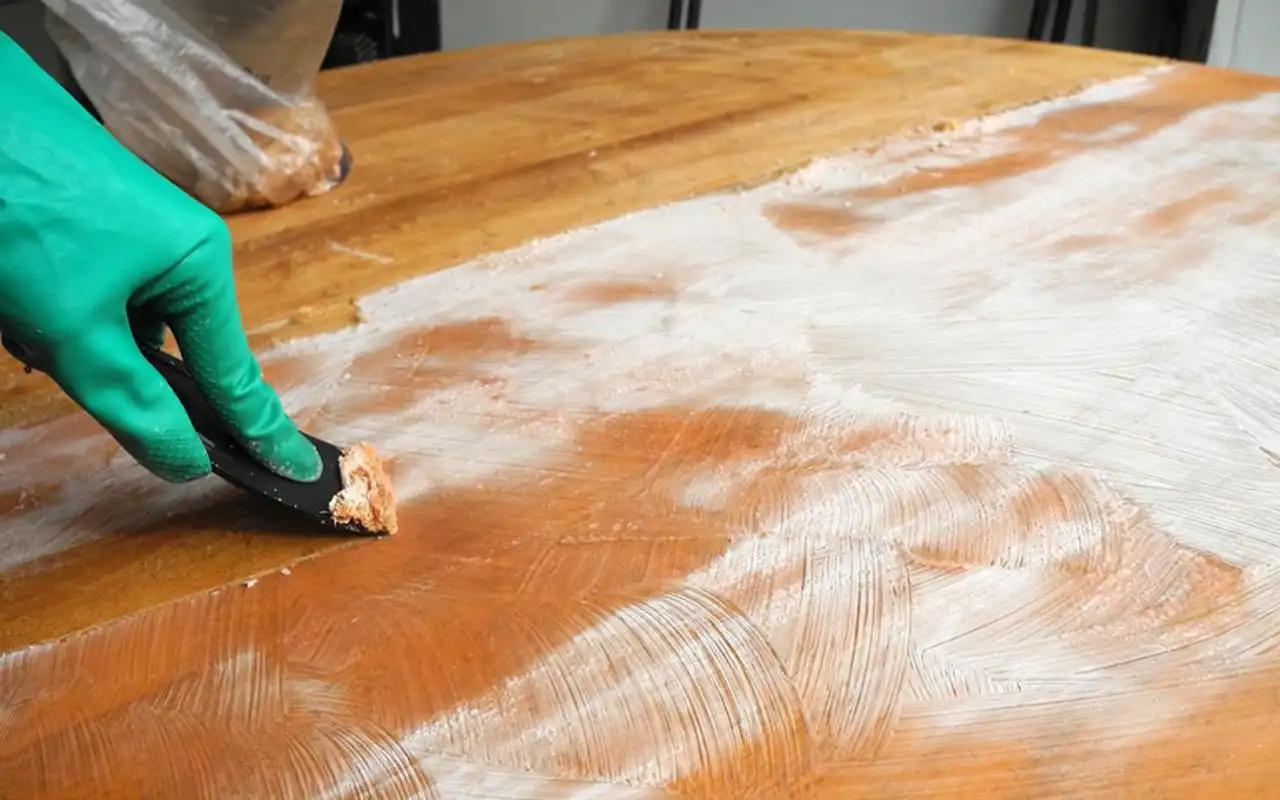Do you have some unwanted polyurethane on your hands? Whether you accidentally got it on there or you’re trying to remove it from a project gone wrong, removing polyurethane can be tricky. If you’re not careful, you can end up stripping the stain from the wood along with the polyurethane, leaving you with a big mess.
Polyurethane is a clear finish that is often used to protect wood surfaces. It is durable and has a high resistance to scratches, stains, and water damage. However, polyurethane can be difficult to remove once it has been applied. If you are trying to remove polyurethane from a wooden surface, and you don’t know how many options you have.
But don’t worry – we’ve got you covered. With our step-by-step guide, you’ll learn how to remove polyurethane from wood without removing the stain. So whether you’re trying to fix a mistake or just want to change the look of your project, follow our guide and you’ll be able to do it yourself in no time.
Effective Methods for you to Remove Polyurethane from Wood Without Removing the Stain:
Looking to strip away that old polyurethane finish without removing the stain? You’re in luck! There are a number of ways to do this, and we’ve compiled a list of the few best methods. Whether you’re using it, we’ll show you how to get the job done quickly and easily. So read on to learn more about how to remove polyurethane from wood without removing stains.
Method no 1. removing the polyurethane from wood by using the denatured alcohol:

Denatured alcohol is a powerful solvent that will quickly break down the polyurethane, allowing you to remove it without damaging the stain of wood. Plus, it’s easy to find and relatively inexpensive, making it a great option for anyone looking to refinish their furniture.
What you need:
- Denatured alcohol
- lint-free cloths or old rags
- Safety goggles and gloves
- Bucket
- Scrub brush (optional)
Instructions:
1. Pour the denatured alcohol into the bucket. If you’re working with a small area, you can pour the alcohol directly onto the rag.
2. Dip the rag into the bucket and wring it out so that it’s damp but not dripping.
3. Rub the rag over the surface of the wood, moving in small circles.
4. Continue rubbing until you’ve removed all of the polyurethane.
5. Rinse the area with clean water and dry it off with a clean towel.
6. Inspect the area to make sure all of the polyurethane is gone. If there are any stubborn spots, you can repeat steps 2-5 until they’re gone.
Method no 2: Use paint stripper for removing the polyurethane from wood:

Paint stripper is a powerful solvent that can be used to remove paint, varnish, and polyurethane. It’s available in both liquid and gel form, and it can be found at most hardware stores.
What you need:
- Paint stripper
- Lint-free cloths or old rags
- Safety goggles and gloves
- Bucket
- Scrub brush (optional)
Instructions:
1. Put on your safety goggles and gloves before beginning.
2. Pour a generous amount of paint stripper into a bucket.
3. Dip a lint-free cloth or old rag into the stripper and apply it to the wood surface.
4. Let the stripper sit for about 15 minutes, or according to the manufacturer’s instructions.
5. Use a scrub brush to remove any remaining stripper or polyurethane.
6. Rinse the area with water and let it dry completely before refinishing the surface.
7. If you’re using a gel stripper, you can apply it directly to the wood surface with a brush. Let it sit for the recommended amount of time before removing it with a cloth or brush.
Method no 3: UseSandpaper for removing the polyurethane from wood

If you don’t want to use chemicals, you can try removing the polyurethane with sandpaper. This method will take more time and effort, but it’s a great way to remove polyurethane without damaging the wood stain.
What you need:
- Sandpaper (coarse, medium, and fine grit)
- Bucket of water
- Sponge
- Paper towels
Instructions:
1. Start with coarse grit sandpaper and sand the entire surface of the wood. Focus on areas where the polyurethane is thicker.
2. Dip the sponge in the bucket of water and wipe down the sanded area. This will remove the sanding debris and help to prevent clogging of the sandpaper.
3. Sand the area again with medium grit sandpaper.
4. Repeat steps 2 and 3 using fine-grit sandpaper.
5. Wipe the area with a damp sponge to remove any remaining dust.
6. Dry the area with paper towels.
That’s it! You’ve now removed the polyurethane from your wood without removing the stain.
Method no 4: Use Mineral Spirits to remove the polyurethane from wood:
If you’re looking to get rid of paint, varnish, or polyurethane, try mineral spirits..They’re available at most hardware stores, and they’re less harmful than some other solvents.
What you need:
- Mineral spirits
- Paper towels
Instructions:
1. Soak a paper towel in mineral spirits.
2. Rub the soaked paper towel over the polyurethane.
3. Continue rubbing until the polyurethane is removed.
4. Wipe away any excess mineral spirits with a clean, dry cloth.
5. Repeat steps 2-4 if necessary.
6. Allow the area to dry completely before applying a new finish.
Tips:
- If you’re having trouble removing the polyurethane, try using a scraper or sandpaper.
- Be sure to ventilate the area well when using mineral spirits.
- Wash your hands thoroughly after using mineral spirits.
Method no 5. Use Lacquer Thinner to remove the polyurethane from the wood:
A type of solvent used to remove paint, varnish, and polyurethane is lacquer thinner. It’s readily accessible at most hardware stores and is less harmful than certain other solvents.
What you need:
- Lacquer thinner
- Cotton swabs or rags
Instructions:
1. Test a small, inconspicuous area of the wood to see if the polyurethane will strip off without taking the stain with it. If it does, proceed to the next step.
2. Pour a small amount of lacquer thinner onto a cotton swab or rag.
3. Rub the lacquer thinner into the polyurethane, using circular motions.
4. Wipe away the lacquer thinner and polyurethane with a clean cloth.
5. Repeat the steps until all of the polyurethane has been removed.
Method no 6. Use vinegar to remove the polyurethane from the wood:
Vinegar is a great natural alternative to chemical strippers. It’s less harmful to the environment and your health, and it’s just as effective at removing polyurethane.
What you need:
- White vinegar
- A clean cloth
- Water
- Sandpaper (optional)
Instructions:
1. Pour some vinegar onto your cloth.
2. Rub the cloth over the area of wood you want to strip.
3. Let the vinegar sit for a few minutes to soften the polyurethane.
4. Use a clean cloth to wipe away the loosened polyurethane.
5. Rinse the area with water and dry it thoroughly.
6. If there is any stubborn polyurethane remaining, sand it off with fine-grit sandpaper.
There you have it! Six different methods for removing polyurethane from wood without removing the stain. Try out a few of these methods and see which one works best for you.
Frequently Asked Questions:
No, these methods will not damage the wood. However, be sure to test a small area first to see how your particular wood responds.
You can remove polyurethane from your hands using various household products, such as vinegar, nail polish remover, or cooking oil. Simply rub the product into your hands and then wash them with soap and water.
If you accidentally get polyurethane on your clothes, you can try removing it with vinegar, nail polish remover, or rubbing alcohol. Soak a cloth in the product and then rub it onto the stain. Wash the clothes as usual. Repeat if necessary.
Conclusion:
Polyurethane is a popular protective finish for wood, but it can be difficult to remove. If you’re looking to strip polyurethane from wooden furniture or floors without removing the stain, here are six methods that might work for you. Some of these methods are easier than others, and some require special equipment or materials, so be sure to read through all of them before deciding which one to try.
And remember, always test any method on a small area first to make sure it doesn’t damage the wood or change the color of the stain. Which of these methods do you plan to try?


3 thoughts on “How to Remove Polyurethane from Wood without Removing Stain?”